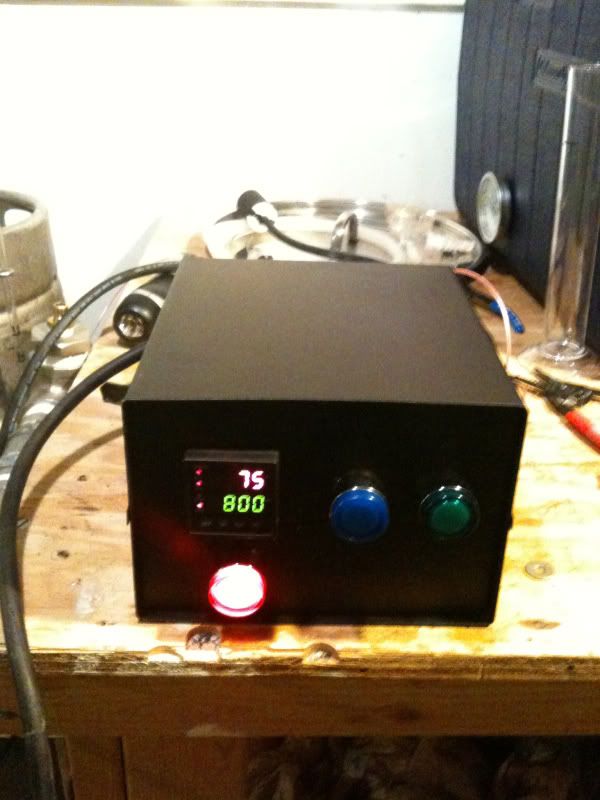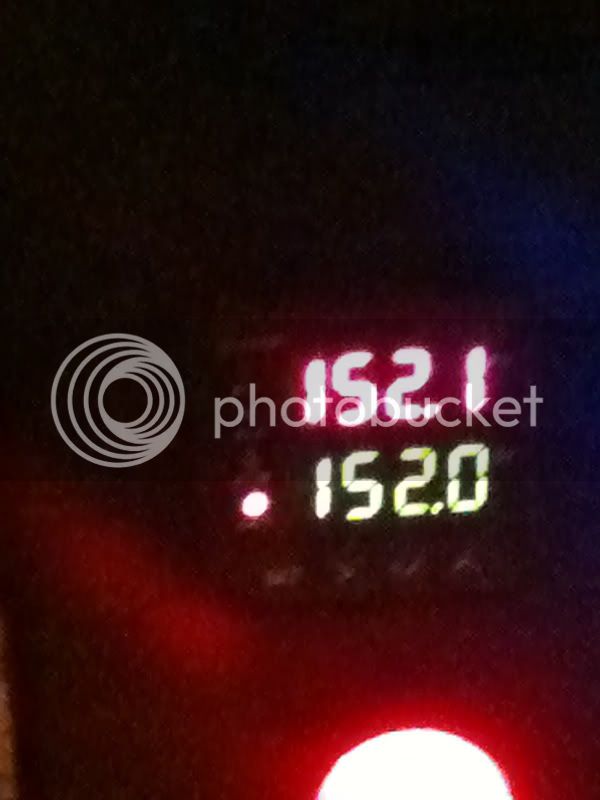wildwest450
Well-Known Member
- Joined
- Dec 27, 2007
- Messages
- 8,978
- Reaction score
- 191
Could you control a rims tube with an electronic ranco?
.
.

Quick question. If I put together a similar unit as the RIMS system using a 4500 W 240V heating element, approximately what temp would the fluid exit at? I've seen how a RIMS system can be beneficial, but without spending a lot of money, I thought maybe this little unit could be used as an instant hot water heater for immediate fly sparge water. The water would only be used at an approximate rate of .15-.2 gpm for sparging right? Is this stupid? OK, OK... Maybe not so quick of a question.
Quick question. If I put together a similar unit as the RIMS system using a 4500 W 240V heating element, approximately what temp would the fluid exit at? I've seen how a RIMS system can be beneficial, but without spending a lot of money, I thought maybe this little unit could be used as an instant hot water heater for immediate fly sparge water. The water would only be used at an approximate rate of .15-.2 gpm for sparging right? Is this stupid? OK, OK... Maybe not so quick of a question.
This formula using Google calculator will tell you what the temperature rise is in Fahrenheit. Add to that the input temperature and you have the exit temperature. For 4500 W and 0.2 gal/min the temperature rise is 153 F. In theory the PID should be able to throttle it back to you set temperature, but I have a feeling that the PID cycle time will need to be less than 2 seconds for this to work.
Thanks! So by changing the element to a 3800 W and flow to .25 gpm (which appears to be more the norm) it looks like we would get to about 100-103 degree differential. That seems to be pretty close to perfect assuming my water supply is in the 60-70 degree range.
That makes sense... I've looked at the Auberins website, but really don't have a clue which controller works for this set up. I'll probably go with the 240 volt 4500 element. Here's the link with the selection of controllers... Any suggestions as to which one would work best?
http://auberins.com/index.php?main_page=index&cPath=1
At a very slow flow rate, it is possible. It's enough for fly sparging, but I wouldn't strike with it. It's also very difficult to tune into that slow of a flow rate with a ball valve. I'd recommend a gate valve for this.
http://www.youtube.com/watch?v=u9X8s07MJ-A
The water from your hot water heater in not good for sparging.
I guess it's the minerals or something.
I just remember asking the same question, and getting several responses that the water was not suitable.
I guess I should have remembered why, so I could have a better response.
Hopefully someone will chime in that knows the answer.
I'm interested in how it would be different than what we are doing with water heater elements in our HLTs?
Ed
Hopefully someone will chime in that knows the answer.
I'm interested in how it would be different than what we are doing with water heater elements in our HLTs?
Ed
According to the people who installed my water conditioning system the hot water from the water heater might have a number of problems.
1. Excess aluminum or magnesium from the anode. If your water is reactive in any way it will contain minerals from the anode that were dissolved by electrolysis to prevent corrosion of the tank and fittings.
2. Hot water tanks quite often have sulfur reducing bacteria as it is a good environment for them.
3. Most minerals concentrate near the bottom of the water heater, changing the entire mineral balance. This may be good or bad, depending upon what beer you are making.
As a test, pour a glass of water from the cold tap, one from the hot tap and one from the drain on the hot water tank. Cover them and let stand a couple of hours. Look for dissolved gas coming out of suspension. Then taste compare the three samples. Make up your own mind as to which samples are acceptable to you for brewing. Personally I can taste quite a difference and choose to use only cold water in my brewing.

Well, I just ordered the Tri Clover RIMS tube from Brewershardware. Been wanting to go RIMS for a while. I ordered a Stand from Marcus at Brewersequipment two weeks ago, and figured I should go "all out." I was going to build the one from this thread, but knew in the long run I would want the tri clover!
Does any one use the Tri Clover Tube? It says it has a 3" thermowell. Can anyone suggest a temp sensor?
I read most of this thread, but I am sure I will have more questions to come!
As always, Thanks for any help!
I have Derrin's Tri-Clove RIMs tube. I have used it on one brew and it worked flawlessly. The temp sensor you use will depend on the controller you are using. What controller are you using / planning to use?
Ed
I thought it was you who had one. I saw your other for sale and missed it by a day. Not sure what I am going to use yet. Haven't done much as far as planning. I am assuming you are taliking a PID? Originally I was going to follow the parts list by Sawdustguy. Will that PID and SSR setup work? I am a bit "green" on this. I am no electrician, but do plenty of things around the house.
Do you mind sharing how you have yours set up?
I also use one of Derrin's RIMS tubes. As Ohio Ed says, it's perfect. I bought the 4" thermocouple with 1/2" NPT threads from Auber. I use a PID. Derrin switched out the 1/4" tri-clover for a 1/2" tri-clover no questions asked. I like that.
That is just what I was comming to ask. After reading up on it more, with the thermowell, I guess I can use a Johnson or Love controller. I was going to ask you guys if there is any benifit to this, or if I should ask Derrin to change the fitting to use a thermocouple and PID.
I guess you answered before I got to ask.
The ranco and Johnson controllers are on/off switches. They don't behave the same as PID, when they reach the setpoint they turn off. This can can an overshoot. Simply put, the PID can be configured in a manner to adjust output as it nears the setpoint lessening the chance of overshoot and maintain temps more accurately. Because it switches so frequently you'll need a solid state relay to handle that.
A Johnson or Love controler are not PID's, they are fairly simple on off thermostats. They will not give you the accuracy a PID will. They work fine for a keezer or fermentation chamber because they have a 2-3 degree swing and run for several minutes, then shut down for several minutes. A PID will very rapidly "pulse" the element on and off to fine tune the temerature and it will learn (through AutoTune), how much "on time" is required.
Ed
Which one of you to believe? LOL
Yea, I gotta learn to ignore the work falling down around me and pay more attention to HBT. Had I been a little quicker, maybe we wouldn't have both answered. But at least I think we both said the same thing
Ed
That is one of the best things about this site! So many knowledgeable people ready to answer questions and help!
One thing I did see in the responses... Reelale said he used a thermocouple.
Thermocouples will work fine, but thermocouples use special wire. Splices and connectors require special attention. You might want to look into RTD's which are not as sensitive to changes to the wire. Auber PID's should support either.
Ed


Enter your email address to join: